Sanctioned for targets 1000 km away. Story of Liutyi (Fierce) Ukrainian long-range drone which burns Russian refineries
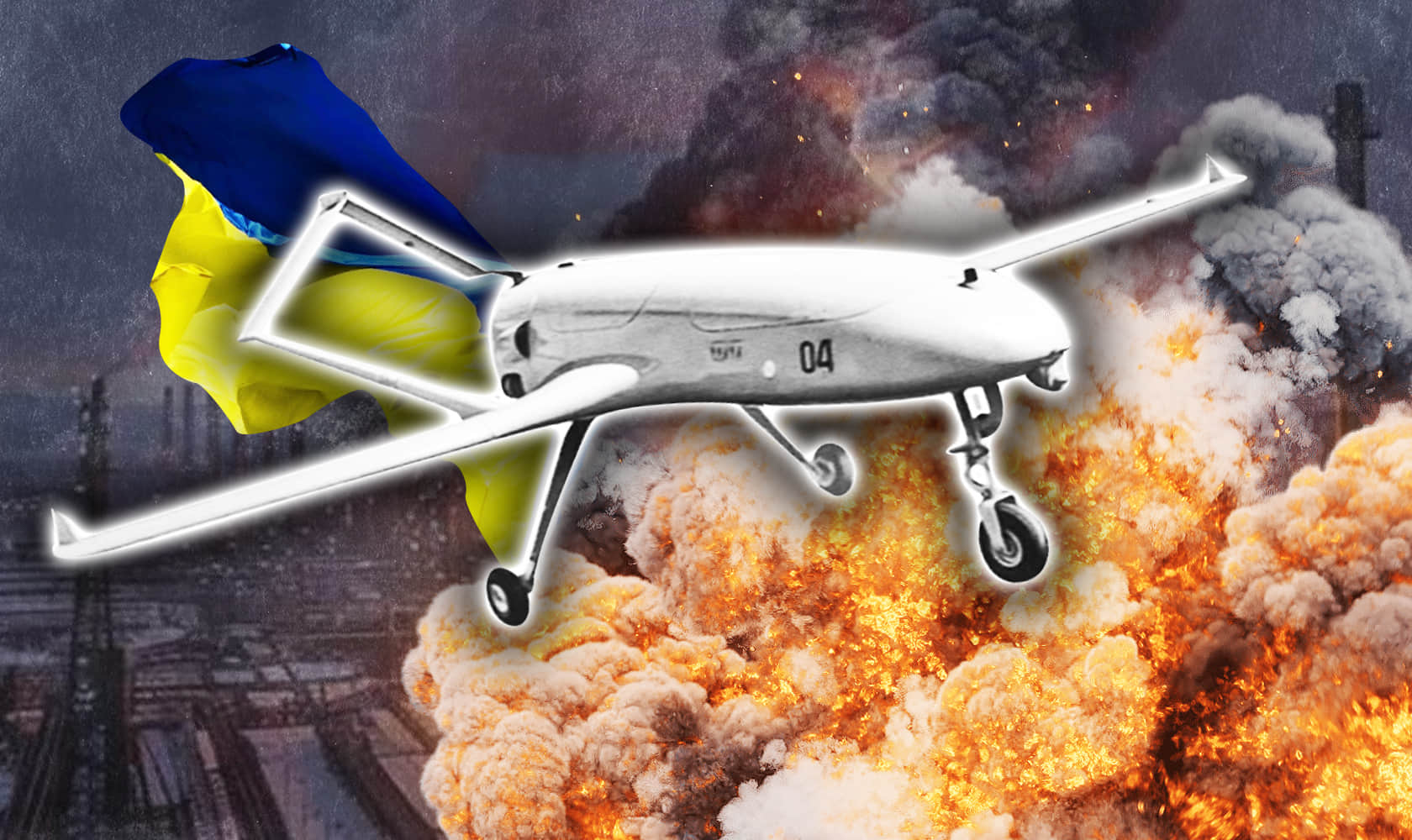
The end of April 2023. There was good weather in Odesa Oblast, with excellent visibility over the sea. The Oblast had not suffered daily attacks by drones and missiles so far, and people were walking calmly along the streets in anticipation of summer.
None of them knew that at that moment, a top-secret Ukrainian drone aircraft was about to attack Zmiinyi (Snake) Island during its first combat test. But it failed, and now 50 kilograms of explosives were flying from the sea directly into the city on the coast.
It was impossible to issue an air-raid warning due to the secrecy of the trials.
It turned out that the autopilot installed to control the flight simply didn't allow the aircraft to crash into the ground. Therefore, the armed drone smoothly gained the designated altitude, but instead of diving and crashing into the island, it levelled off and flew towards the "Home" point.
Representatives from military high command (the exact individuals are unknown) and developers observed the launch from the launch site. They realised that the armed drone was flying straight towards them.
Lieutenant General Mykola Oleshchuk, Commander of Ukraine’s Air Force, who also observed the launch, ordered combat aircraft to be scrambled to shoot down their own drone.
But everything ended happily – approximately 30 kilometres from the shore, operators finally picked up the signal and regained control of the drone.
"To be honest, nobody really believed in this drone. It's large, it's visible on radars. At that time, the Russians were already shooting down our Bayraktars (attack drones), so there was very little faith in our own development, made from scratch with no experience. And after they almost hit their own command centre with it, many simply shrugged off this project," recalls a member of the defence committee of the parliament, familiar with the course of the trials, with a smile.
After the failure during the trials, the story of what is now Ukraine's most successful kamikaze drone could have ended before it even began. But the developers didn't give up. Neither their colleagues nor the military command believed in their project. However, they were thinking about their aircraft all the time; they created the first prototypes with their own money, taught it to fly, and were almost able to launch an attack. They just could not give up at this last stage.
And two weeks later, on 3 May 2023, the developers triumphed. An oil depot in the Russian village of Volna on the Taman Peninsula caught fire at night, unexpectedly for the local authorities.
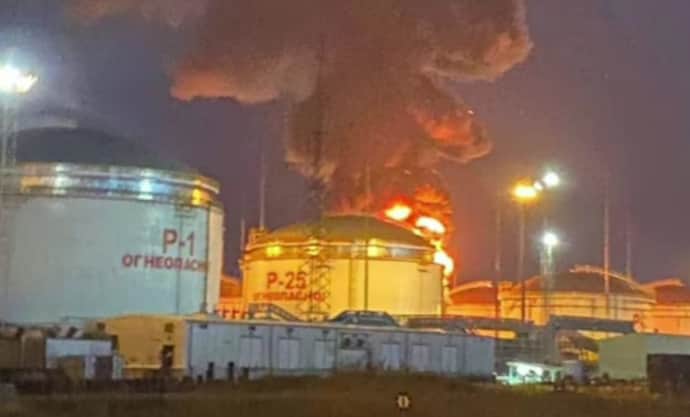
A group of developers and the military in Ukraine had been waiting for this "surprise". Later, a photo of the combat test was posted by Ukroboronprom spokesperson Nataliia Sad. The Commander-in-Chief of the Armed Forces Valerii Zaluzhnyi, Air Force Commander Mykola Oleshchuk and the then Director of Ukroboronprom Yurii Husiev were in the selfie with her.
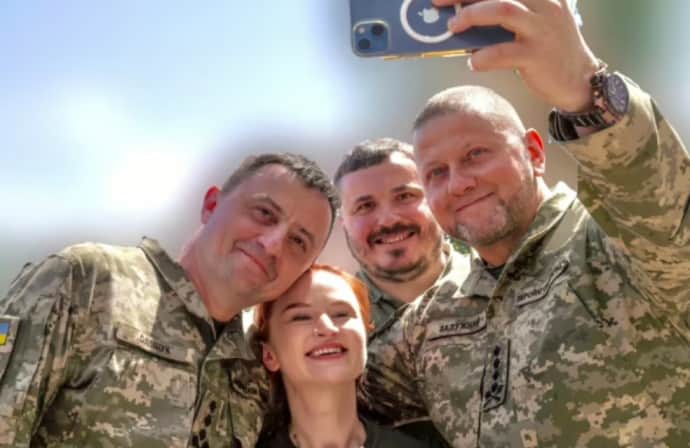
The moment Sochi caught fire, the era of Liutyi began. Ukraine had obtained not just another drone, but the ability to deliver precise "fiery greetings" to targets at a distance of more than 1,000 kilometres.
However, at that particular moment, on 3 May, the Defence Forces had nothing but the joy of a single strike. There were no other Liutyis ready to go, no crews to launch them, and no contracts or funding to speak of.
Ukrainska Pravda investigated how the Ukrainian long-range drone Liutyi went from a single model to the main arsonist of Russian factories and airfields in the context of all-out war, why the Defence Forces were afraid to launch it, and how the competition between the special services gave the drone a chance to become a truly mass-produced weapon.
UP managed to talk to a very wide range of unique people involved in the production and use of the Liutyi. But this text will not contain a single authorised quote. After reading this, you will understand why.
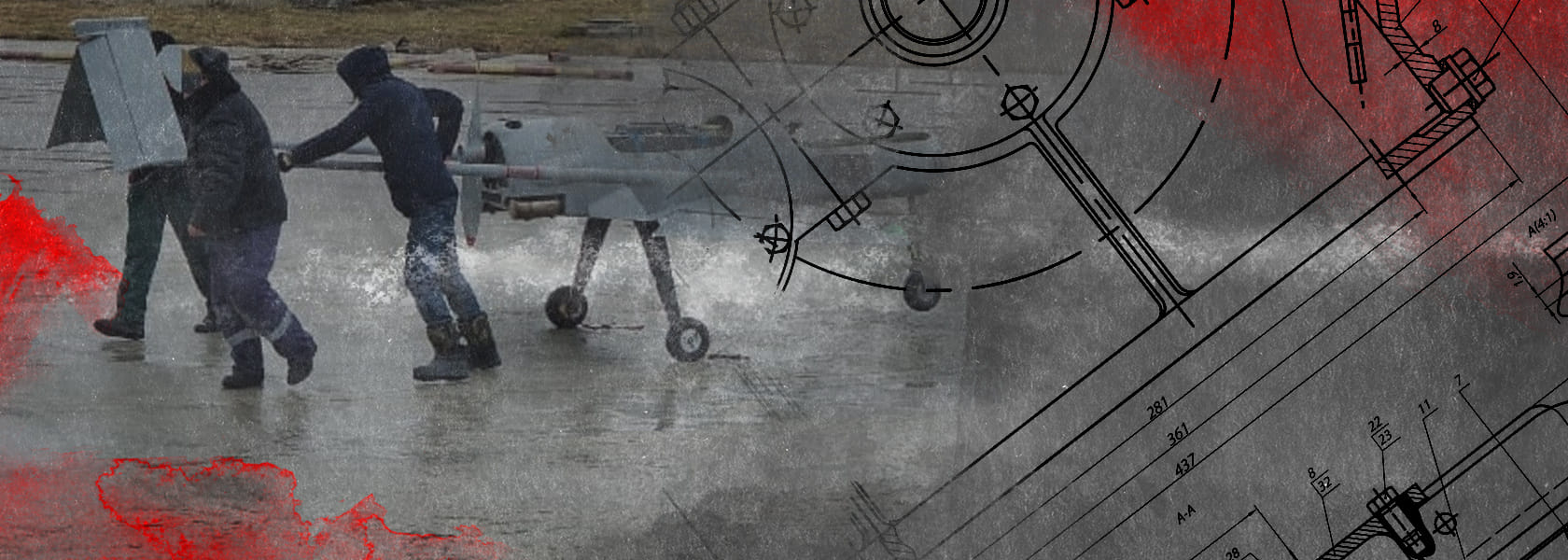
Drone that nobody believed in
The first months of Russia's full-scale invasion continued. Ukraine had demonstrated that its armed forces were capable of holding off the invasion on their own.
Around this time, a meeting of arms manufacturers was held under the leadership of the then head of Ukroboronprom, Husiev, to discuss what they could offer.
"We needed some new solutions, some new developments that could change the situation in our favour. And that's when the story of Liutyi came up. It (the drone – ed.) wasn't called that yet, and it wasn't actually ready at all. We had an idea, a concept of an attack drone.
But when we started to implement it, it became clear that it would be difficult to compete with Bayraktar in the sphere of attack drones. But no one has made a kamikaze that flies over 1,000 kilometres. And manufacturers have started moving in this direction," says one of the participants of that meeting.
Deciding to create a drone and actually assembling it, as people in Odesa say, are two entirely different things. Especially when there is no funding for anything.
"When we started making our drone, everyone told us that we were crazy, that no one needed it. The military came to see it: ‘Oh, it's too big. We need to make small copters.’ People from the Air Force said: ‘They will be shot down as easy as one, two, three.’ But we were slowly moving forward," recalls one of the development team members.
The first fuselage was assembled by enthusiastic modellers at their own expense. Yes, it was a big machine, and yes, it was quite expensive.
But with each passing day of the war, the desire to strike back at Russian territory, storage points and airfields grew.
"We looked at the market: no one carries more explosives than our drone, no one flies further than it. We just need to wait, and this drone will become indispensable. Even if we hit Crimea, we will be able to take off from somewhere near Kyiv, we won't even have to go to the contact line. And we were noticed," the development team recalls.
The Ukrainian kamikaze project received its biggest boost after Russia began launching Iranian Shahed drones. When the first "lawnmowers" (people call them this due to the sound that drones make – ed.) hit Ukraine's energy and infrastructure, it became obvious to the military that something had to be done.
The need was acute, and the possibilities were also limited. No one in Ukraine has ever made such large drones. How to equip them? Where to get the spare parts? What tasks will they have to perform?
The Izium plant used to make guidance systems. But they were for missiles, huge, and after the Russian occupation, the plant ceased to exist.
The team had to search the market for everything accessible – and for what wasn't – to build what they couldn't find with their own hands.
Initially, the developers faced a problem – namely, the combat mission of the drone: how to set its trajectory correctly to attack the target. Other developers knew the solution, but it cost money. Therefore, flight after flight, the Liutyi’s team searched for their own option and seemingly managed to solve this complex task: to turn an ordinary glider into a kamikaze drone.
In the autumn of 2022, the Liutyi’s flying prototype was finally assembled. The first flight took place on 22 October 2022, and everything went very well.
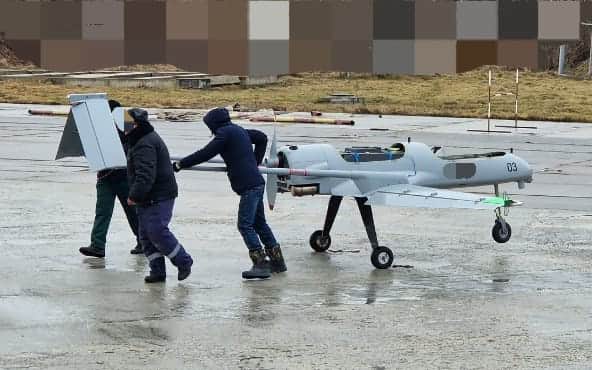
In December 2022, that first aircraft crashed during a test flight. However, the airframe turned out to be so resilient and repairable that it was returned to flight in just three days.
The drone was ready. Its combat components were ready. Developers were ready to hand it over to someone. But everyone was afraid to fly it.
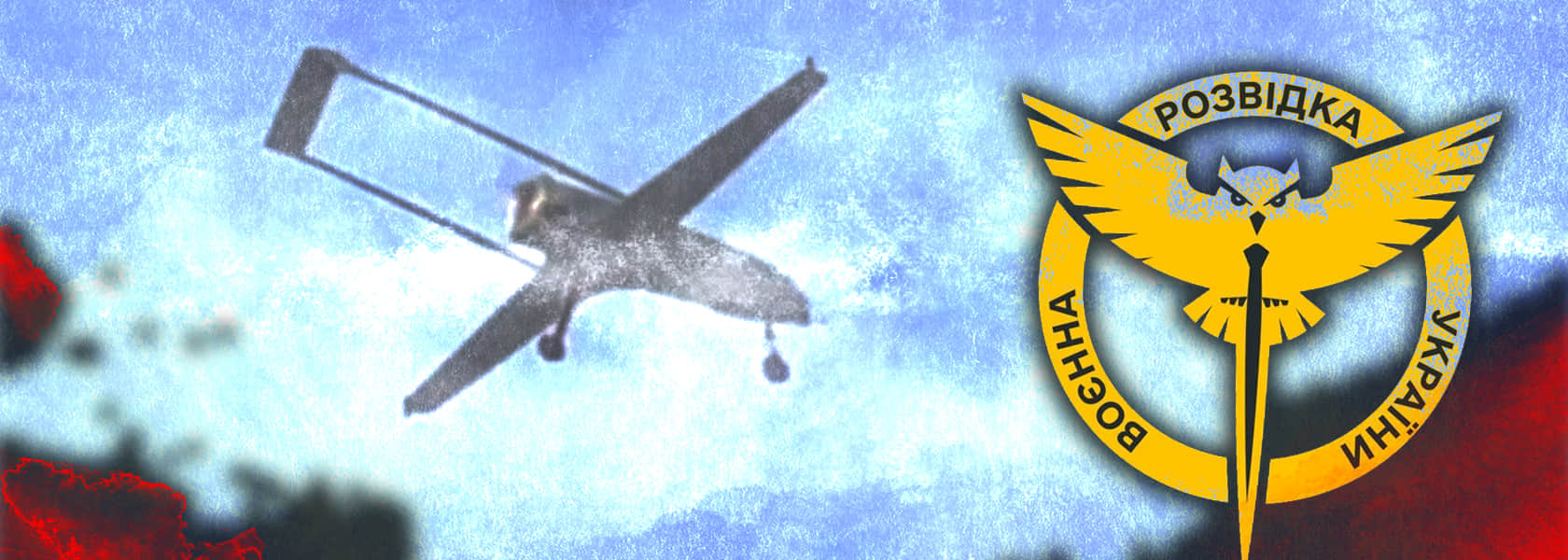
The drone they feared to deploy
The year 2022 in the war was the era of the Mavic and Autel drones. Getting a drone that could drop explosives was a joy for any unit
At that time, a separate unit specialising in drones was formed within Defence Intelligence of Ukraine. Ukrainska Pravda readers know about it from our article on the Magura V5 maritime drones.
"And we were doing great because our leader himself is young and gathered such a group of genuinely reckless people. And Kyrylo Oleksiyovych (Budanov, Ukraine's Defence Intelligence chief – UP) – it’s also important – didn't say 'no' to anyone who came to him with the craziest ideas. And the ideas were very diverse, from an armoured train to some kind of boat, from a hot air balloon to an underground metro. Budanov always says, 'Okay, let's try,’" one of the intelligence officers tells UP.
"By the beginning of 2023, we had tried everything available. Sometimes we even had to launch from enemy territory. Well, if it lacked range, then it had to be carried into Russian territory and launched from there," recalls the source.
Once, intelligence officers disguised as journalists attended an event dedicated to the launch of the Brave1 platform.
"One of Minister (of Strategic Industries) Kamyshin's deputies approached us and said, 'Guys, there's an interesting aircraft, but everyone's afraid to launch it. The aircraft is ready, but there are launch issues," recalls the source.
The 'issues' were quite impressive.
The first aircraft had a minor problem with the front landing gear and compass calibration: the aircraft could slide off the runway at high speed during take-off and crash somewhere on the roadside.
"That's why the operator had to constantly steer those first aircraft to keep them on the runway. This means that you have to chase this 50-kilogram bomb from behind in a car at speeds of up to 150 km/h so that the operator can see it and align it with the runway. Obviously, no one wanted to launch it that way," one of the team members who conducted the first launches told Ukrainska Pravda.
There was no such problem during daylight hours because the aircraft is large, over 4 metres long and has a wingspan of almost 7 metres. It is clearly visible. Yet the 'chase' was inevitable at night. To see how it all worked at first, see the video of one of the early launches released by Ukrainska Pravda.
ГУР та СБУ атакували металургійний комбінат у Липецьку – джерела https://t.co/xjTyD7XQIK
— Українська правда ✌️ (@ukrpravda_news) February 24, 2024
УП також отримала відео зльоту одного з безпілотників, якими атакували комбінат. pic.twitter.com/5yvoWrwuEo
"The shrapnel damage of the Liutyi is guaranteed at a range of 400-500 metres. That's why we didn't even wear flak jackets, as they wouldn't have saved us," recalls a participant in the first launches.
For the sake of fairness, it should be said that one of the company's senior executives was always present at each launch during the "chases". Whenever the drone rolled off the runway and into the bushes, it was the developers who were the first to approach the vehicle and pull it back.
"Well, we agreed to launch this Liutyi, but it turned out it's not that simple. It's a whole aircraft, not a drone. We needed to learn. We started creating a training centre; for several months, experienced pilots taught us, explained all the nuances of large aviation. But everyone wanted to fly to some airfield in Engels, to oil refineries, etc., and hit them precisely so that they would feel that we also have a carrier that can reach them," the source in the intelligence tells UP.
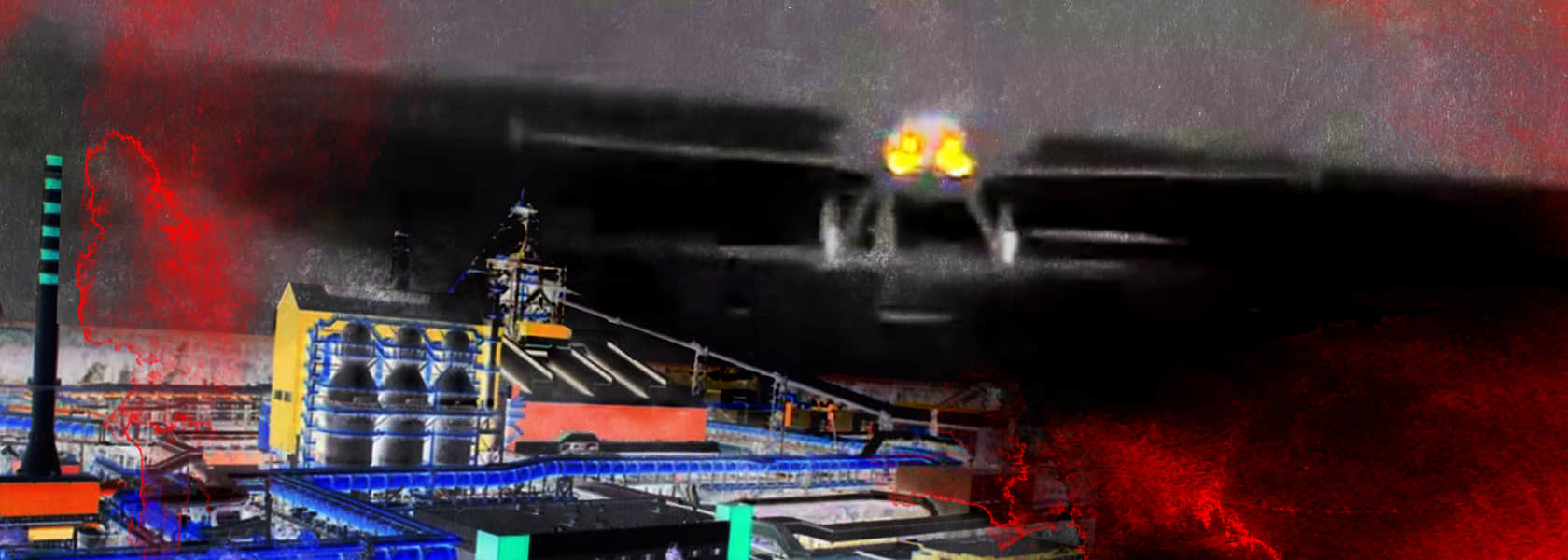
The drone that took off
At the end of August 2023, the first serial batch of Liutyi drones was ready. On 28 August, the Special Operations Forces (SOF) of the Ukrainian Armed Forces struck the base of the 126th Brigade of the Russian Black Sea Fleet, based in the village of Perevalne in temporarily occupied Crimea, using various UAVs.
In their report on this attack, the SOF presented "one of the drones that took part in the operation." Essentially, this was Liutyi’s first combat use and its first published photo. It was also the last.

The first truly long-distance launch of Liutyi over Russia was carried out very effectively, and fortunately, no one was harmed. But they could have been.
It was nearing the end of September 2023. It was one of the first weeks of training for intelligence pilots, but they decided it was time to launch Liutyi.
One of the road sections in Chernihiv Oblast, once used as an airfield, was chosen for the first launch.
The choice of location also had a security aspect: the team was sent closer to the border, as no one knew exactly how the drone would behave in the air. The aircraft was new and had 50 kilograms of warhead, so it was important that they at least made it across the border.
"At the time, no one understood how much these first prototypes could skid on the road; they would roll to the side of the road. Moreover, the roads are designed so that water flows off the road onto the side. That means there is a slight slope. And this slope is enough to make the navigation go a little crazy," recalls one of the participants of the first combat launch.
So, the first launch in Russia slowly drags on, increasingly turning into a scene from a Guy Ritchie action movie.
Darkness descends on Chernihiv Oblast. There are 50 minutes left until curfew, and all drivers hurry to reach the towns to avoid spending the night in the middle of nowhere. Fighters, who blocked the road for the drone launch, are barely surviving the assaults of gangs of long-distance truckers.
Meanwhile, in the middle of the road, a car repeatedly swerves behind the aircraft that just won't take off.
"One time, the takeoff was interrupted. We turned around and went to the starting point. The second start – the drone skids again. The takeoff is interrupted yet again. It's like being the first astronaut: it's hard not because it's impossible, but because there's no one to ask how to do it right.
But we were so eager to get there and hit the Moskals [the Russians] that we tried a third time: the aircraft took off and was flying. And then there was a strike, not merely somewhere, but on an oil depot near the airfield in Sochi [Russia]. And this was the only airfield that the Russians had on the Black Sea at the time. It was a triumph," recalls the launch participant.
У російському місті Сочі горить резервуар з дизельним паливом. Telegram-канал База повідомив, що, за попередніми даними, причиною пожежі стала атака безпілотника. Відео з Telegram-каналів pic.twitter.com/S7BOHxN33I
— Українська правда ✌️ (@ukrpravda_news) September 20, 2023
The second flight took place ten days later, on 1 October, again in the area of Sochi. This time, the target of Liutyi’s strike was a helicopter park, which also serviced Putin's residence.
"We hit their helicopter landing site and damaged several helicopters. But we didn't know at first that the day before we hit Adler, Putin had met with Tokayev there. Putin was 12 kilometres away from the place where the second strike by Liutyi took place. This was confirmed to us later," intelligence sources tell Ukrainska Pravda.
And the Russians didn't even know what hit them.
"When it struck in Sochi, they assumed it was launched from a ship or from the mountains in Georgia. They had no idea it came from Ukraine. And then all of a sudden it hits St. Petersburg – practically the opposite end of the country. It was evidently a shock for them," a participant in the launches recalls in a conversation with Ukrainska Pravda.
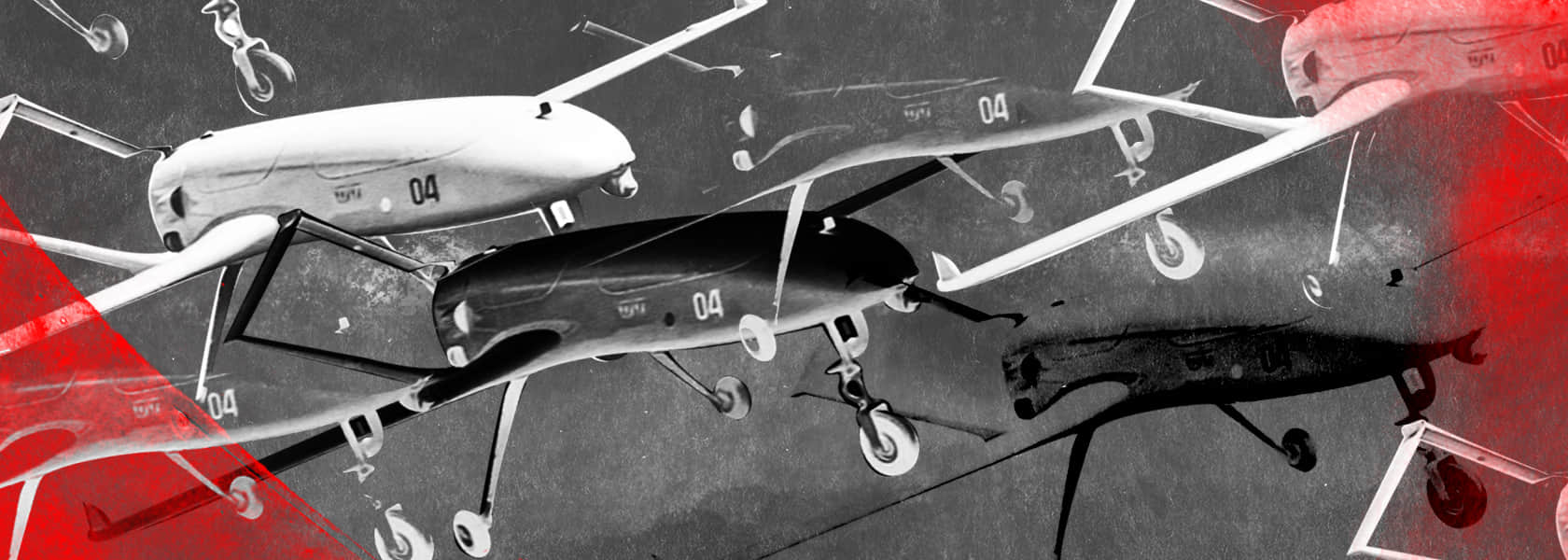
The drone everyone needs
It has long been apparent that a drone that misses is an orphan, while a successful one has a thousand fathers – and customers too.
Especially when someone can foster competition among different power structures, hence raising demand for their products.
In this section of the story, Kamyshin's Ministry for Strategic Industries reappears on stage. The minister arrived at the job, as they say, prepared for everything; the drone had been developed and was even in operation. But it had no real prospects.
The first batch was produced from fuselage blanks, and there were no orders for further batches. Ukraine's Defence Intelligence seemed to be flying some Liutyi drones, but they were unable to procure many more. The Ukrainian Security Service also obtained some drones from the original batch, but initially handled them with caution to avoid suspicion.
Therefore, it was very difficult to imagine hundreds of orders coming in – that is, until the strike in St. Petersburg happened.
"Our security services carried out another attack on St. Petersburg. And a Liutyi UAV from one of the security agencies flew all the way and struck the target, while a different UAV from another organisation was lost after failing to reach its intended objective. And so we played along with that a bit, pointing out the fact that we have enough Liutyi drones and they perform well, and that they would need such aircraft to also report successes. And everyone enjoys being the first to bring good news," one of the sources within the Ministry of Strategic Industries recalls off the record.
At the ministerial level, it was of less significance who would fly and demolish targets in Russia; what mattered was that they do it with Liutyi. And as this bet paid off, orders from various power structures increased, as did the number of reports of explosions on Russian territory.
According to Ukrainska Pravda, as of May 2024 Liutyi is used by more than just special and intelligence agencies. Even the Ukrainian Air Force has recently placed a large order and is preparing groups of operators for this UAV.
The mass production and use of drones has enabled the planning of large-scale cooperative activities involving multiple structures at the same time.
"When we demonstrated that it flies and strikes well, others from different services and units began to appear, eager to learn and fly. We even organised a sports competition to see who could launch the most drones and burn Russian infrastructure.
However, we immediately had to arrange coordinated operations because certain objectives necessitated the use of multiple aircraft simultaneously. Just one security agency would not have enough," explains a member of the first group of operators.
The most daring joint operations by several security services were promptly carried out against the Novolipetsk metallurgical complex and oil refineries in Ryazan, Nizhny Novgorod, and Tatarstan.
Attacks on Ryazan infrastructure have become Liutyi's calling card. After all, during daytime flights, it is clear that multiple drones in a sequence target the same place with surgical accuracy, crippling the refinery's most expensive components.
Ekonomichna Pravda wrote extensively about the reasoning for the Ukrainian strikes and their economic impact on Russia.
Liutyi is responsible for around 80% of all accurate hits on Russian refineries. However, it is not the only one.
Other UAVs include Ninja, which recently set a range record by flying 1,500 kilometres to the Gazprom Neftekhim Salavat plant, as well as Bober, Brama, and other developments. However, Liutyi continues to lead in terms of price/quality/range/accuracy.
However, regardless of which drone does incredible feats in 15-second viral videos on your phone, keep in mind that analysts, intelligence officials, special services, pilots, and others are all working hard to achieve this.
"I don't even know who does our target analytics. However, I receive a description of the target on 15-20 pages of A4, where everything is stated down to the tiniest detail, such as where the drone should land, so I do not have to improvise. The same story applies to air defence, satellite photos, radar data, and so on," says one of the pilots.
"For instance, the aircraft's positioning to attack. It should be upwind. Sometimes you notice that if you fly upwind, there are some standing pipes or whatever on the way, and you have to go between them to reach your target. And all of this is not directly in front of you, but a thousand kilometres away, without an optical channel. Therefore, believe me when I say that our planning is a massive job," he adds.
13 березня дрони СБУ атакували нафтопереробні заводи в РФ. відео з соцмереж pic.twitter.com/8HG8MjS6Ak
— Українська правда ✌️ (@ukrpravda_news) March 13, 2024
In general, the theme of attacks on the Russian oil industry is worth a separate page in the history books of the current war.
The architects of this systemic destruction of Russian oil refining call their "project" by the name of an old Russian meme, "ebashneft" (f**k up oil).
"At the end of 2023, we sat together and discussed where this war was heading. Then there existed such an idea that 2022 went by the motto 'we persevere', 2023 by 'counterattacking', and 2024 by 'we dig in and respond asymmetrically'.
We realised Russia had two sacred areas: Crimea and its oil industry. Oil is to them what grain is to us. They can starve and freeze, but oil must be dug and pumped; this gives them a cause to live in the world. Well, and big revenues." explains one of the initiators of the "ebashneft" project from the government.
Attacks on the oil industry have a direct economic impact, reducing the amount of fuel available to the Russians troops, as well as exerting psychological pressure on the Russian state.
As petroleum product prices rose and a petrol crisis developed in Russia, many of its residents began to question whether everything was truly so beneficial for them – most ironically, petrol stations were empty in the world's largest petrostate.
At times, Ukrainian drones have hit 10% of processing capacity in a few days. Even if the Russians fix their factories on a regular basis, the downtime costs them so much that the cost of 10 drones is simply incomparable.
Consider the logic of target selection. Ukraine primarily targets processing and export terminals. These facilities add value while allowing Russia to turn its massive oil reserves into a stable global currency.
Russia will revert to selling cheap crude oil if it does not refine and export. It will have to dump massive unclaimed amounts on the market, which will lead to an increase in ‘grey’ supply and further financial losses.
Until the entire transport infrastructure becomes overburdened with new output that has nowhere to go.
"We have overcome the barrier of no aviation, which earlier meant that there is no possibility to strike deep into the enemy territory.
And the most important point is that during this delay, even though we didn't get supplies from our partners, we could still fly, hit, and hurt the adversary. This was extremely significant to our spirits from a psychological standpoint. Yes, the Russians fly their Tupolev bombers, but we fly to Engels airfield and demolish those bombers," summarises one of the members of the team that manages the attacks.
"Here we hit a raw nerve. We could feel it from the pressure that was put on us. And not just from Russia. Our partners almost publicly urged us to stop. However, this is a Ukrainian weapon manufactured in Ukraine by our experts. They cannot just tell Zelenskyy that this cannot be fired against Russia. They can only ask for it. And only then will he consider whether to listen to these requests," says one of the government officials related to the attacks, explaining the sheer intensity of the situation.
"Perhaps this is the most important thing we accomplished: sovereignty in making decisions that are painful to both our adversaries and friends," he concluded.
Roman Romaniuk, UP
Translation: Sofia Kohut, Theodore Holmes, Violetta Yurkiv
Editing: Judith Edelman, Susan McDonald